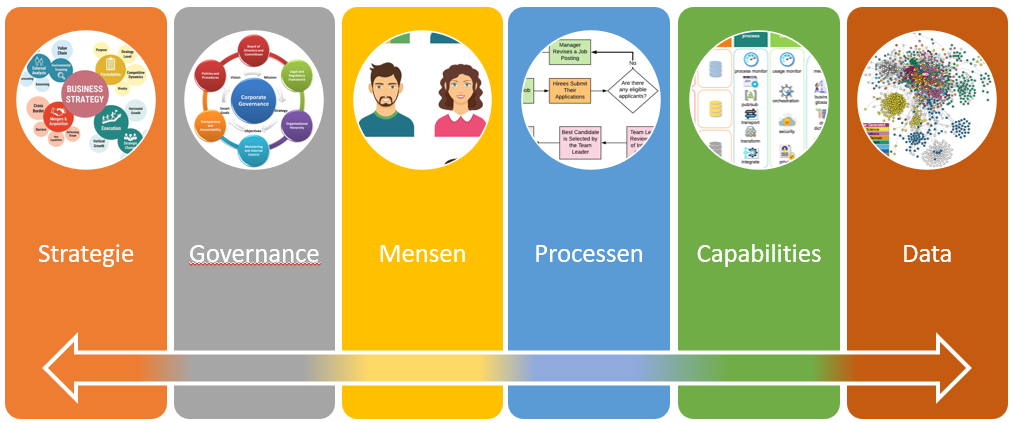Being an adult and the road to it is something we all go through or have gone through. We also know that you are never finished and so we regularly hone in on what we want to achieve.
A maturity model or maturity model is a powerful tool for organisations to see where they are, where they want to be and therefore what they need to start doing to get there. In other words, to sharpen or update your strategy and roadmaps.
There are many different models, specific to aspects of the organisation, such as processes, operations, product management, digital marketing, content, data, ESG, you name it. For data, there are also several, some overlapping, some from different perspectives.
Maturity aspects
Now we can get complicated, but in my opinion, maturity is about how well you are able to execute certain things. Those aspects in general are:
- Strategy – where do we want to go and how do we plan to get there
- Governance – how do we direct and govern our activities and changes, what are our principles and policies, what roles and responsibilities do we have?
- People – what competencies do people in the different roles need (including management)?
- Processes – how do we design processes to effectively, flexibly and efficiently support governance, people and data?
- Capabilities – what capabilities do we need to effectively, flexibly and efficiently support people, processes and data
- Data – what data do we have and need and how do we ensure it meets the needs of the organisation

Maturity levels
Fairly widely accepted are the different levels of maturity:
- Initial
- Repeatable
- Defined
- Demonstrable
- Optimised
Now it gets interesting, because now you are going to determine what the different levels for the different aspects are for your organisation. This is a very nice exercise to do together and, in the process, understand each other even better and get a sharper sense of where you actually want to go.
When you have done this and reached agreement together, you can determine where you are now with the organisation, where you want to go and what you have to work on.
Maturity model as a tool
A maturity model is an excellent tool for taking action and measuring progress. Choose a model that easily relates to the business and the business strategy, making communication and progress easier.
Other models
But Ronald, says the observant reader, you are from DAMA NL and on your website you have a different maturity model (https://www.dama-nl.org/data-maturity/). How about that?
Absolutely true and that is precisely my point. There are many models and they all aim to take action and make progress visible. On the DAMA NL website, we start from the knowledge areas of the DAMA DMBoK and the Maturity working group has created a nice model with questionnaire for that.
The model I describe here takes the approach of the business and what it is trying to achieve.


